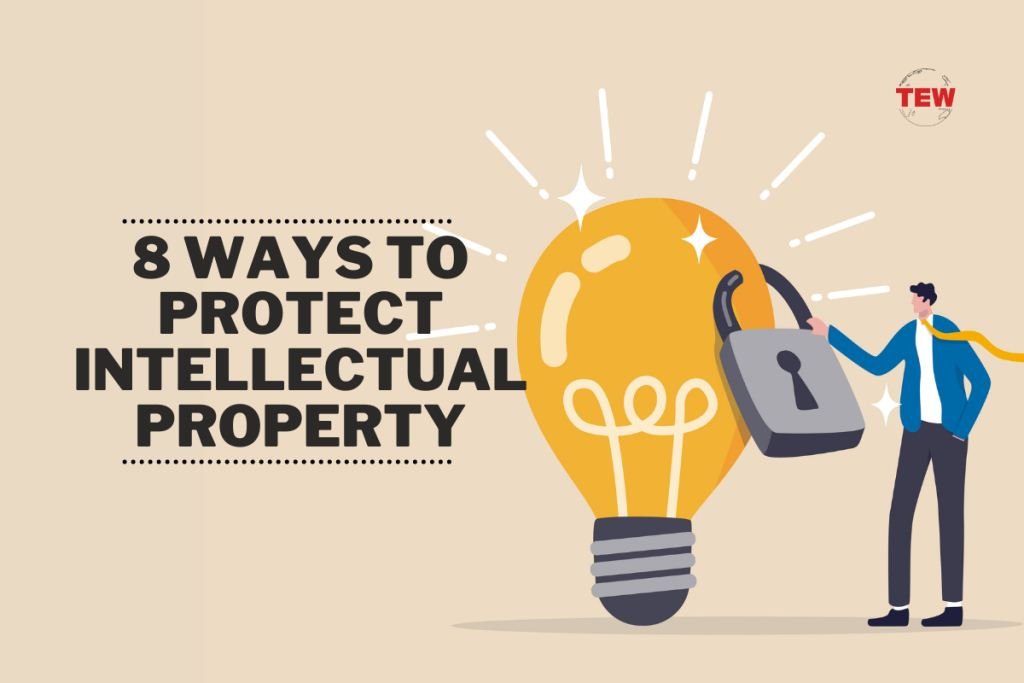Unlocking the Potential of Your Innovative Thinking
In today’s fast-paced, technology-driven world, companies are constantly seeking innovative solutions to stay ahead of the competition. This growing demand for creative ideas has created a lucrative opportunity for individuals to monetize their innovative thinking and get paid for their ideas. Whether you’re an entrepreneur, inventor, or simply a creative problem-solver, you can capitalize on your ideas to generate income.
Many industries, such as technology, healthcare, and finance, rely heavily on innovative solutions to drive growth and improvement. As a result, companies are willing to pay for ideas that can help them stay competitive, improve efficiency, or solve complex problems. By tapping into this demand, individuals can turn their ideas into income streams and build a successful career.
However, to succeed in this space, it’s essential to understand the value of your ideas and how to present them in a way that resonates with potential buyers. This requires a deep understanding of the market, industry trends, and the needs of your target audience. By developing this expertise, you can increase your chances of getting paid for your ideas and building a successful career as an innovator.
Furthermore, the rise of online platforms and marketplaces has made it easier than ever to showcase and sell your ideas. Websites like IdeaConnection, InnoCentive, and NineSigma provide a platform for individuals to submit their ideas and connect with companies looking for innovative solutions. By leveraging these platforms, you can increase your visibility, build your network, and get paid for your ideas.
In addition to online platforms, companies are also looking for innovative thinkers to collaborate with and bring new ideas to life. By building relationships with companies and investors, you can secure funding, resources, and expertise to develop and commercialize your ideas. This can be a lucrative way to monetize your ideas and build a successful career as an innovator.
How to Identify and Develop Valuable Ideas
Identifying and developing valuable ideas is a crucial step in getting paid for your ideas. To increase your chances of success, it’s essential to understand what makes an idea valuable and how to develop it into a commercially viable solution. Market research plays a critical role in this process, as it helps you understand customer needs, industry trends, and competitor activity.
Conducting market research involves gathering and analyzing data from various sources, including customer surveys, focus groups, and industry reports. This information helps you identify gaps in the market, understand customer pain points, and develop solutions that meet their needs. By understanding your target audience and the market landscape, you can create ideas that are tailored to specific needs and have a higher chance of success.
Another key aspect of developing valuable ideas is creating unique solutions. This involves thinking outside the box, challenging assumptions, and exploring new perspectives. By combining market research with creative thinking, you can develop innovative solutions that stand out from the competition and attract attention from potential buyers.
Additionally, it’s essential to validate your ideas with potential customers and industry experts. This involves testing your ideas, gathering feedback, and refining your solutions based on the input you receive. By validating your ideas, you can increase their commercial potential, reduce the risk of failure, and attract investors and partners who are willing to support your venture.
Some effective strategies for identifying and developing valuable ideas include brainstorming, mind mapping, and SCAMPER (Substitute, Combine, Adapt, Modify, Put to Another Use, Eliminate, and Rearrange). These techniques can help you generate a wide range of ideas, evaluate their potential, and develop them into commercially viable solutions.
By following these strategies and tips, you can increase your chances of developing valuable ideas that can be monetized. Remember to stay focused on customer needs, industry trends, and market demand, and be willing to iterate and refine your ideas based on feedback and validation.
Leveraging Online Platforms to Sell Your Ideas
The internet has made it easier than ever to showcase and sell your ideas to a global audience. Online platforms, such as freelance marketplaces, idea submission websites, and social media, provide a range of opportunities for individuals to monetize their ideas and get paid for their creativity.
Freelance marketplaces, such as Upwork and Freelancer, allow individuals to offer their services and ideas to a vast pool of potential clients. These platforms provide a range of tools and resources to help individuals showcase their expertise, bid on projects, and deliver high-quality work.
Idea submission websites, such as IdeaConnection and InnoCentive, provide a platform for individuals to submit their ideas and solutions to companies and organizations looking for innovative solutions. These platforms often offer cash rewards and recognition for successful submissions.
Social media platforms, such as LinkedIn and Twitter, provide a range of opportunities for individuals to showcase their ideas and expertise. By building a strong online presence and networking with potential clients and partners, individuals can increase their visibility and attract opportunities to monetize their ideas.
Some successful examples of individuals who have leveraged online platforms to sell their ideas include entrepreneurs who have used crowdfunding platforms to raise funds for their projects, inventors who have used patent marketplaces to license their inventions, and writers who have used online publishing platforms to sell their work.
To get started with leveraging online platforms to sell your ideas, it’s essential to identify the platforms that best align with your goals and expertise. Research the platforms, understand their terms and conditions, and develop a strategy for showcasing your ideas and attracting opportunities.
Additionally, it’s crucial to develop a strong online presence, including a professional website and social media profiles, to showcase your expertise and attract potential clients and partners. By building a strong online presence and leveraging online platforms, individuals can increase their chances of getting paid for their ideas and achieving success.
Protecting Your Intellectual Property: Patents, Trademarks, and Copyrights
When monetizing your ideas, it’s essential to protect your intellectual property (IP) to prevent unauthorized use, theft, or exploitation. IP protection can help you maintain control over your ideas, prevent others from profiting from your work, and increase the value of your ideas.
There are three primary types of IP protection: patents, trademarks, and copyrights. Patents protect new and useful inventions, such as products, processes, or methods. Trademarks protect brand identities, including logos, names, and slogans. Copyrights protect original literary, dramatic, musical, and artistic works, such as books, music, and films.
To secure patent protection, you’ll need to file a patent application with the relevant patent office, such as the United States Patent and Trademark Office (USPTO). The application process typically involves conducting a patent search, preparing and filing a patent application, and responding to any office actions or objections.
Trademark protection can be secured by filing a trademark application with the USPTO or other relevant trademark offices. The application process typically involves conducting a trademark search, preparing and filing a trademark application, and responding to any office actions or objections.
Copyright protection is automatically granted to the creator of an original work, but registering your work with the U.S. Copyright Office can provide additional benefits, such as the ability to sue for copyright infringement.
It’s essential to understand the differences between patents, trademarks, and copyrights and to seek professional advice when navigating the IP protection process. By protecting your IP, you can safeguard your ideas, prevent unauthorized use, and increase the value of your ideas.
When getting paid for your ideas, IP protection can also provide a competitive advantage, as it demonstrates your commitment to innovation and creativity. By protecting your IP, you can establish yourself as a credible and innovative thinker, which can lead to more opportunities and higher earning potential.
Collaborating with Companies and Investors to Bring Ideas to Life
Collaborating with companies and investors can be a highly effective way to bring your ideas to life and get paid for your creativity. By partnering with organizations that have the resources and expertise to commercialize your ideas, you can increase the chances of success and generate significant income.
The process of collaborating with companies and investors typically involves pitching your idea, negotiating a partnership agreement, and working together to develop and commercialize the idea. To increase your chances of success, it’s essential to prepare a strong pitch, understand the needs and goals of the company or investor, and be flexible and open to feedback and suggestions.
Some benefits of collaborating with companies and investors include access to resources and expertise, increased credibility and visibility, and the potential for significant financial returns. By partnering with organizations that have a proven track record of success, you can tap into their knowledge, networks, and resources to bring your ideas to life.
To find potential partners, you can attend industry events, conferences, and networking meetings, or use online platforms and social media to connect with companies and investors. You can also use online marketplaces and platforms that connect innovators with companies and investors.
When pitching your idea, it’s essential to be clear, concise, and compelling, and to demonstrate a deep understanding of the market, industry, and customer needs. You should also be prepared to address any concerns or questions the company or investor may have, and to negotiate a fair and equitable partnership agreement.
Some successful examples of collaborations between innovators and companies include partnerships between startups and large corporations, joint ventures between entrepreneurs and investors, and licensing agreements between inventors and manufacturers. By collaborating with companies and investors, you can bring your ideas to life, generate significant income, and achieve success.
Building a Personal Brand to Establish Credibility and Attract Opportunities
Establishing a strong personal brand is essential for individuals who want to get paid for their ideas. A well-crafted personal brand helps to establish credibility, build trust, and attract opportunities. It’s a way to showcase expertise, values, and unique perspectives, making it easier to stand out in a crowded market.
A strong online presence is the foundation of a successful personal brand. This includes a professional website or blog, active social media accounts, and a consistent tone of voice across all platforms. By showcasing expertise and sharing valuable content, individuals can position themselves as thought leaders in their industry and attract potential clients, partners, or investors.
Networking is also a crucial aspect of building a personal brand. Attend industry events, conferences, and meetups to connect with like-minded individuals and potential collaborators. Engage in online communities related to your niche, and participate in discussions to demonstrate expertise and build relationships.
Developing a unique value proposition (UVP) is also essential for establishing a strong personal brand. A UVP clearly communicates the benefits and value that you bring to the table, making it easier to differentiate yourself from others. By highlighting your strengths, skills, and accomplishments, you can create a compelling narrative that resonates with your target audience.
In addition to showcasing expertise, a personal brand should also reflect your values, personality, and passions. Authenticity is key to building trust and credibility with your audience. By being true to yourself and your values, you can create a loyal following and attract opportunities that align with your goals and aspirations.
Consistency is also crucial when building a personal brand. Ensure that your messaging, tone, and visual identity are consistent across all platforms. This helps to create a cohesive and recognizable brand that reinforces your expertise and values.
Finally, a strong personal brand requires ongoing effort and maintenance. Continuously create and share valuable content, engage with your audience, and adapt to changes in your industry. By doing so, you can establish a reputation as a thought leader and attract opportunities that help you get paid for your ideas.
Overcoming Obstacles and Staying Motivated on the Path to Success
Monetizing ideas and getting paid for your creativity can be a challenging and unpredictable journey. Despite the potential for success, many individuals face obstacles and setbacks that can discourage and demotivate them. However, with the right mindset and strategies, it’s possible to overcome these challenges and stay motivated on the path to success.
One of the most significant obstacles to monetizing ideas is self-doubt. Many individuals struggle with feelings of inadequacy and uncertainty, wondering if their ideas are good enough or if they have the skills and expertise to bring them to life. To overcome self-doubt, it’s essential to focus on your strengths and accomplishments, and to remind yourself of your unique value proposition. Celebrate your successes, no matter how small, and use them as motivation to keep moving forward.
Another common obstacle is rejection and failure. Not every idea will be successful, and not every pitch or proposal will be accepted. However, rejection and failure are an essential part of the learning and growth process. Instead of getting discouraged, use rejection and failure as an opportunity to learn and improve. Analyze what went wrong and use that feedback to refine your ideas and approach.
Staying motivated is also crucial when monetizing ideas. It’s easy to get discouraged and lose momentum, especially when faced with obstacles and setbacks. To stay motivated, it’s essential to set clear goals and deadlines, and to break down larger projects into smaller, manageable tasks. Celebrate your progress and accomplishments along the way, and remind yourself of your why – the reasons why you wanted to monetize your ideas in the first place.
Surrounding yourself with a supportive community is also vital for staying motivated and overcoming obstacles. Connect with like-minded individuals who share your passions and interests, and seek out mentors and coaches who can provide guidance and support. Join online communities and forums, attend networking events, and participate in workshops and conferences to stay connected and inspired.
Finally, it’s essential to stay flexible and adaptable when monetizing ideas. Be open to new opportunities and challenges, and be willing to pivot and adjust your approach as needed. Stay up-to-date with industry trends and developments, and continuously educate yourself on the latest tools and technologies.
By overcoming obstacles and staying motivated, individuals can successfully monetize their ideas and get paid for their creativity. Remember that success is a journey, not a destination, and that every setback and failure is an opportunity to learn and grow. With persistence, determination, and the right mindset, anyone can turn their ideas into income streams and achieve their goals.
Real-Life Examples of Successful Idea Generation and Monetization
There are countless examples of individuals who have successfully generated and monetized their ideas, turning their creativity into income streams. Here are a few inspiring stories of entrepreneurs and innovators who have achieved success through their ideas.
One notable example is Sara Blakely, the founder of Spanx. Blakely came up with the idea for footless pantyhose while getting ready for a party. She patented her idea and launched Spanx, which has since become a household name. Today, Blakely is one of the youngest self-made billionaires in the world, and her company has expanded to include a wide range of products.
Another example is Chris Gardner, the founder of Gardner Rich & Co. Gardner came up with the idea for a stock brokerage firm while struggling to make ends meet as a single father. He worked tirelessly to build his business, and eventually, his company became one of the most successful stock brokerage firms in the country. Gardner’s story was even made into a movie, “The Pursuit of Happyness,” starring Will Smith.
In the tech industry, there’s the example of Airbnb founders Brian Chesky and Joe Gebbia. They came up with the idea for a peer-to-peer accommodation rental platform while struggling to pay their rent. Today, Airbnb is one of the largest and most successful online marketplaces in the world, with millions of listings in over 191 countries.
These examples demonstrate that anyone can turn their ideas into income streams with the right mindset, skills, and support. By identifying and developing valuable ideas, leveraging online platforms, protecting intellectual property, collaborating with companies and investors, building a personal brand, and overcoming obstacles, individuals can successfully monetize their creativity and achieve their goals.
These success stories also highlight the importance of perseverance, hard work, and adaptability. Turning an idea into a successful business or product takes time, effort, and dedication. However, with the right approach and support, anyone can get paid for their ideas and achieve financial freedom.
By learning from these examples and applying the strategies outlined in this article, individuals can increase their chances of success and turn their ideas into income streams. Whether you’re an entrepreneur, inventor, or creative professional, there’s never been a better time to monetize your ideas and achieve your goals.








